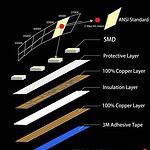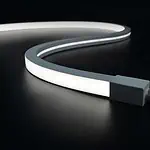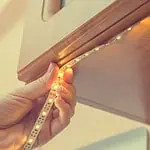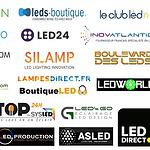As light technology is frequently upgrading, future-proofing the light system is essential for sustainability and keeping your lighting up-to-date. With this approach, the Zhaga Consortium sets global standards for LED lighting components and offers certifications to adherent products.
It allows interoperability and interchangeability between LED components of different manufacturers, irrespective of brands. So, if you want to enter the global market and need international recognition for your manufactured LED light component, Zhaga certification is what you need! Keep reading to explore more:
What is the Zhaga Consortium?
Zhaga Consortium is a global organization that standardizes LED lights to offer interoperability and interchangeability. It deals with different LED components like- LED drivers, LED modules, LED arrays, LED holders, and LED light engines.
The primary purpose of the Zhanga Consortium is to provide specifications to build reliable smart lighting of industrial grade, ensure proper integration between the lighting components, and create a smooth supply chain management system for the lighting business.
A Brief History of the Zhaga Consortium
Zhaga Consortium was founded in February 2010 in Germany with leading lighting manufacturing companies like Philips, Osram, and Tridonic. This company runs under the IEEE Industry Standards and Technology Organization (IEEE-ISTO). As of 2021, the Zhanga Consortium has more than 300 members. The members together have been developing standards for LED lights, aiding global compatibility of lighting systems. The Consortium covers the thermal, mechanical, and electrical properties of light and its integration with different smart technologies. Thus, the Zhaga Consortium focuses on easing the repairing, replacing, and upgrading of the light fixture.
Core Objectives of the Zhaga Consortium

Ensuring Compatibility
Zhaga consortium sets standards that the manufacturers follow while producing the parts. This ensures compatibility between different light parts ensuring a smooth integration.
Easy Repairing & Upgrade
The Zhaga consortium separately treats the LED module, LED driver, and sensors. So, if there is an issue with any particular light component, you can upgrade or replace it with a Zhaga compliant one instead of an entire bulb replacement.
Creating Global Standard
Under this consortium, the light manufacturers, semiconductor companies, research organizations, and testing labs collaborate to set a global standard. So, while exporting lights, the manufacturers need not follow varying designs for different countries. For example- a Zhaga-certified light manufactured in Asia needs no redesigning for using it in Europe. However, other certifications, like the EU, are needed to meet European standards.
Speeding Up Production & Launching New Products
When upgrading any light fixture, the manufacturer need not design the light from scratch. They can follow the Zhaga standard for the basic component of light and bring modifications to any specific part. This saves up the R&D cost and also boosts new product launching.
Adopting New Technology
Zhaga focuses on improving lighting performance by integrating advanced and latest technology. Thus, it ensures long-time compatibility of the light fixture, making Zhaga-certified lighting future-proofed.
Zhaga Consortium Applicable LED Components
Zhaga consortium sets its standards for different components of LED lights, including the following:
- LED Light Engines
- LED Modules
- LED Arrays
- Holders
- Electronic Control Gear (LED Drivers)
- Connectors
- Sensors
- Communication Nodes
Key Zhaga Standards and Specifications
1. Zhaga Book Standards
This book deals with the socket compatibility of LED lights. The standards in Book 3 include the configuration of the LED modules and mechanical interfaces of the LED light engines.
The standards in Zhaga Book 7 focus on outdoor lighting, especially street lights. They cover the thermal, electrical, and mechanical properties of the lights.
The standard in Zhaga Book 12 focuses on interchangeability between different light fixtures. These cover the dimensions, configuration, and interfaces for the LED modules.
The standards of Zhaga Book 18 aligned with the widely used standards of USA and UK, ANSI, and NEMA guidelines. In this book, you will get details about the mechanical interface between the receptacle and the module. This helps the research and development team with their lighting innovations.
Besides, this book also discusses electrical configuration for a 24V DC power supply and DALI controller integrated with a 4-pin connector.
The standards in Zhaga Book 20 focus on creating seamless data exchange between light network components. This discusses the interference between the sensing node and the indoor LED lights. The standardization of this interference allows a table connection between the sensing node, LED driver, and control system.
Zhaga Book 21 established standards for integrating drivers with LED modules. This discusses different LED module aspects like- thermal, mechanical, and electrical properties. Following these standards, the manufacturer can ensure the interchangeability of different lighting components and thus boost design flexibility.
This book standardizes the interference between outdoor LED lights and rectangular light engines. For the proper functioning of the fixture, these standards cover the thermal, mechanical, and electrical properties of light.
Zhaga Book 25 standardizes the integration between LED lights and smart devices. It includes a Bluetooth interface with mobile NFC readers. Thus, maintenance of smart lighting becomes easier without any cable connection.
2. Zhaga-D4i Certification
The Zhaga-D4i certification provides plug-and-play interoperability between the certified luminaires and control devices. This way, this certification provides and universal approach to smart lighting.
3. Compliance and Zhaga Certification
To be Zhaga certified you must ensure your manufactured lighting follows all their standards. They will test your lighting and ensure it complies with the Zhaga consortium. And once you pass the test, they will offer you Zhaga certification and logo which you can use for your lighting.
Importance: Why Should Manufacturers Adopt Zhaga Standards?
Improving Supply Chain
As the Zhaga consortium is a global standard, the certified light parts can be easily replaced with components with the same standard. So, the support of alternative suppliers producing compatible LED parts can minimize the supply bottlenecks.
Reduces Production and Development Costs
Due to having a fixed standard, manufacturers can produce luminaries with similar and compatible components. This minimizes the production time by cutting off the necessity of developing new designs for LED components. Thus, the Zhaga consortium boosts production and minimizes the development cost for lighting.
Expanded Product Portfolio Without Extra Costs
The manufacturers following the Zhaga consortium can produce different LED light variations without investing much in R&D. They can simply follow the Zhaga standard and bring variation in color temperature, lumen output, and CRI, and thus enhance their product portfolio.
Faster Launch Of New Lighting Product
When launching a new light product, the manufacturer need not to redesign the fixture from scratch. The Zhaga consortium covers standards for LED modules, holders, connectors, controllers, and more. So, extensive redesigning is not necessary here. Just by working on specific features, they can quickly launch new lighting items to their product catalog.
Easy Upgrade
The Zhaga-certified luminaries are powered by interchangeable components. So, you can easily upgrade the existing lighting with more advanced technology without requiring complete redesigning.
Future-Proof Luminaire Designs
The manufacturer follows the same standard for Zhaga-compliant LED light engines (LLEs) and other components. As a result, seamless compatibility is ensured for future upgrades. This minimizes the need for LED product disposal and encourages adopting newer technology to the existing models.
Zhaga Product Database: A Resource for the Lighting Industry
The Zhaga Product Database is a platform for the manufacturer or business to get a clear picture of the application of the Zhaga standards. Here, the manufacturer registers their certified Zhaga product and all the specifications of their product are listed on the database.
So, businesses that are looking for Zhaga-certified lighting components can easily get the specifications of all Zhaga-compliant manufacturers. This allows them to choose the light LED light component manufacturer to meet the Zhaga standard.
The Impact of Zhaga on the Future of Smart Lighting
Zhaga focuses on innovative lighting technology and prompts the standardization of lighting components globally. Thus, it aims to bring future-proof lighting solutions; the core objective of the Zhaga consortium is to provide compatibility and interoperability between different lighting components. As a result, the manufacturers can develop light systems that work seamlessly with different brands and technology.
This way, following the Zhaga standard lighting, designing lights, and integrating smart technology becomes much easier. In addition, the Zhaga Books are frequently updated to keep up with the upcoming trends. Thus, they continuously focus on IoT integration and addressing the emerging challenges of the future.
Therefore, an adaptation of the Zhaga standard expands the versatility and provides the manufacturer with a framework for innovation. Thus, integration among different lighting components and technology becomes much easier. Overall, the Zhaga consortium plays a crucial role in future-proofing the lighting industry.
How to Become a Zhaga Member?
Any lighting manufacturer company can become a Zhaga member upon fulfilling their conditions. You need to fill up their membership application form after reviewing all the provided agreements. After submitting the application they will review your company and manufacturing goods. It will take time to hear for approval; once you receive the approval letter, you are a Zhaga member.
Challenges in Implementing Zhaga Standards
- Even with standardized interference, maintaining Zhaga compatibility with the old light system becomes challenging.
- Receiving a Zhaga certification is time-consuming. It deals with a rigorous testing process that your product must pass. The overall procedure takes a long time for approval and certification.
- While maintaining the standards provided by Zhaga, many times innovation becomes a barrier. Though the set standards save you designing time it somehow limits creative designing.
- Many countries prioritize their local standards, and in such locations, acceptance of the Zhaga consortium is challenging.
Technical Implementation Of Zhaga Consortium: Best Practices
1. Use Standardized Interfaces Of The Zhaga Books
During designing and manufacturing light components, follow the standard specified in the Zhaga books. In this case, consider your application to pick the ideal standard. For instance, if you are designing LED components for outdoor lighting, follow Book 18. On the other hand, for indoor light components, check the standards of Zhaga Book 20, focusing on indoor applications.
2. Follow The Modular Approach By Zhaga Consortium
The Zhaga consortium suggests designing lighting systems with separate, interchangeable components like- LED modules, drivers, sensors, etc. This way, it offers replacement and easy upgrade of light components, eliminating the need to change the entire light system. Such an approach eases new technology adoption and reduces electrical waste.
3. Implement DALI Integration & Achieve Zhaga D4i Certification
To ensure seamless integration with plug-and-play functionality, get a Zhaga D4i certification. This enhances lighting control and automation by implementing DALI and D4i protocols. So, your lighting offers precise dimming, remote control, and energy efficiency.
4. Using Low-Voltage Power
Zhaga Consortium standardizes using a 24V DC power supply for simplified connection. This offers electrical safety and reduces the complexity of electrical connections.
5. Smart Lighting and IoT Integration
Zhaga consortium allows smart lighting and IoT integration standards. For instance, you improve light control with motion, ambient light, and occupancy sensors following Zhaga Book 18 and Book 20.
Besides, the wireless technologies standardization as mentioned in Book 25, enables real-time light monitoring. This helps in innovative city projects and energy savings.
6. Testing and Compliance Verification
End your product to the laboratory for the Zhaga compliance test. In this case, make sure the lab is Zhaga-approved. Keep the test report with you to apply for Zhaga certification.
NEMA vs. Zhaga: Key Differences and Industry Preferences
NEMA stands for National Electrical Manufacturers Association. It is an organization that sets standards for electrical equipment, focusing mainly on North America. Besides lighting systems, NEMA covers a wide range of electrical equipment, including architectural, utility, transportation, and medical systems.
However, both NEMA and Zhaga are acceptable standards for the lighting industry. However, NEMA is mainly performed in the lighting industry of Northern America and regions that prioritize NEMA compatibility. On the other hand, Zhaga is a global standard and offers greater flexibility due to interoperability and supporting smart lighting technologies like DALI D4i.
| Features | NEMA | Zhaga |
| Origin | North America (ANSI C136.41) | Europe, now globally adopted (ANSI C136.58) |
| Core Objective | Standardizes connectors for outdoor lighting, especially streetlights | Standardizes interfaces for LED luminaires and light engines |
| Electrical Contacts | 3-pin, 5-pin, or 7-pin (high-voltage AC and signaling pins) | 4-pin (low-voltage signaling) |
| Dimming Support | Analog (0-10V/1-10V), DALI with additional wiring | Default DALI support (DALI-2, D4i) |
| Installation Complexity | More complex | Simple |
| Interoperability | Less flexible, with a focus on specific products | Highly flexible, enabling product interchangeability |
| Industry Preference | North America, UK, Australia, New Zealand | Globally |
Market Adoption and Case Studies Of Zhaga Consortium
| Lighting Project | Zhaga Case Study | Benefits |
| Smart City Lighting Projects | To adopt energy efficiency and reduce maintenance costs, cities like Amsterdam and Copenhagen have implemented smart lighting systems using Zhaga-compliant components. | • Zhaga interoperability provides seamless integration among components from different suppliers • Reduces inventory costs Enhances supply chain efficiency |
| Industrial Lighting Upgrades | The famous German company Universal Science has implemented Zhaga standards for developing their LED modules. | • Enabling easier upgrades • Reducing design complexity for customers • More efficient product development |
| Innovative Product Development | Amphenol, a reputed American electronic connector manufacturing company has adopted the Zhaga standard to develop innovative lighting solutions. | • Offering a future-proof lighting system • Easy integration of new features to LED lighting fixture |
FAQs
Zhaga nodes are the modules or components that are compatible with Zhaga-certified lighting. These nodes are interoperable with components from different manufacturers. Thus it allows greater flexibility in the lighting system by offering seamless integration of LEd components to the existing lighting system.
Zhaga compliant refers to the LED light fixture or components that adhere to the set standard by the Zhaga consortium. That is, these light components are manufactured following certain standards and are interchangeable for different brands and manufacturers.
The Zhaga socket adheres to the standard provided by the Zhaga consortium for seamless component connection in the LED lighting system. This socket is mostly designed for outdoor LED lighting, mostly street light. The Zhaga socket offers a compatible connection between the LED fixture and the LED drivers, sensors, and communication modules.
Zhaga collaborates with DALI Alliance (DiiA) to offer the certification- Zhaga D4i under the Zhaga consortium. This standardizes the smart lighting system of DALI by combining the mechanical and electrical standards of Zhaga. This way you ensure future-proof lighting solutions offering integration to advanced technology.
Zhaga focuses on energy efficiency and the interchangeability of light components. As a result, the LED components of different manufacturers can be interchanged, reducing the dependency on specific brands. Besides, it facilitates upgrades on the existing luminary. Thus, Zhaga supports sustainability by offering a future-proof lighting system and minimizes the need for LED disposal.
Zhaga connectors follow the Zhaga consortium standards to offer compatibility between different lighting components like LED modules, drivers, etc. This offers seamless integration and interchangeability between different LED components manufactured by different brands.
No, Zhaga certification is not applied to all LED products, but to specific LED components. For example- Zhaga certification is applicable for LED light engines, modules, drivers, holders, arrays, and sensing/communication nodes.
Conclusion
Whether you are an LED light fixture manufacturer or producer of LED components, adherence to the Zhaga consortium opens up your space to the global market for sure!
All certified Zhaga components undergo robust laboratory tests to pass. Besides, the Zhaga-compliant LED components are interoperable and interchangeable, cutting off the dependency on a single manufacturer or brand.
Moreover, it is a global standard offering you recognition to enter any market faster. So, for smart lighting integration and future-proofing Zhaga consortium is a great standard to consider for any LED light manufacturer.
